|
Over the years, I have been to many cat shows to see the fancy, fabulous felines. These show cats are so stunning I think they’re all winners! The cats were very patient in their cages, and I got to see many different, and rare, purebred cats. I always wanted to enter one of my Siamese, so I began to research how to join, and discovered any cat is welcome! Top Tier Shows
The largest cat shows for pedigree cats are hosted by two organizations: CFA (Cat Fanciers Association) and TICA (The International Cat Association), and they are the best of the best, with set standards for purebred, pedigree cats. CFA and TICA are the equivalent of AKC and Westminster dog shows. Each organization has a different reach, in different areas of the country. (If you’ve ever been to a cat show, then you probably know which association has a presence in your area). The cats in these shows have confirmed lineage, have been registered by their breeder, and comply with strict breed regulations. CFA and TICA’s top-of-the-line shows set cat trends, and introduce the newest pedigree breeds, but many smaller shows exist in each state or region. Entering a Cat Show Entering a cat show is pretty straightforward; you can visit the website for each location to register, if you meet that show’s criteria. If a purebred, your cat must have pedigree papers, be registered, and meet the age necessary for the class they’re entering. Most shows don’t mind if the cats are spayed or neutered, but they must all be up to date on vaccines, and healthy. All cats must have their claws, but they also must be trimmed. The cats are judged on the standards which are associated with their specific breed, and are usually kept in cages with an assigned number. While some shows inspect the cats in their respective cages, some will bring them out onto a table for a full inspection, or to present the top cats, and best in show. If you’re considering entering a cat show, your cat needs to be comfortable being in a cage, being around other cats and large groups of people, and being handled. A cat who attacks and growls is not the type of cat who will enjoy being in a show, nor will they likely be awarded points if they can’t be seen or handled properly. If you feel nervous about a large cat show, there are often smaller, lesser known shows that can be found, and may be less overwhelming for kitties’ first event. House Cat Division I love my Daphne, and she’s a DSH tortoiseshell, not a purebred, but most shows have classes for our humble house cats, too! Cats of all kinds are welcome, and there’s a category for everyone. Classes and divisions include a household class, where Daphne falls, a kitten class, generally for cats under eight months old, and a veteran class for kitties over seven years old. There is also a new breeds class, so every type of cat is sure to be represented. Most cats are judged on breed standards, within their class or division, and then judged on color and coat pattern. Winners in first, second, and third places are usually chosen in each division, and then first, second, and third place for the show overall. Each association runs their show a little differently, and some divide cats into extra classes to separate short or long hair coats, specific patterns, and other small physical differences. A Fun Experience I highly recommend going to a cat show just to experience one, and see all of the different breeds and looks. There are usually vendors at cat shows with unique cat gifts, toys, and treats, and also hygiene or grooming tools. I have purchased some unique items at cat shows, and it’s also nice to be able to ask questions or test out products beforehand. Whether you want to show your cat, or be surrounded by them, a cat show is a fun way to spend the day. You get to see all the breeds that you have heard about and wanted to meet, up close and personal.
0 Comments
While we should always research breeds before we adopt a cat, the Bengal is one that is crucial to research. Read online, talk to current owners, and spend time with a Bengal before you commit to bringing one home. A mix of Asian Leopard, and a tabby cat, Bengals can have a wild streak, and because of their wild nature, they are not a good fit for every home. Get all of the details and advice you need below! Creation of Bengals
Asian Leopard cats, “felis bengalensis,” have been hunted for their exotic coats, so cat breeder Jean Mill decided to breed a domestic cat with the Asian Leopard to help save the species, and created the Bengal. This new breed protected Asian Leopard cats because they were no longer considered exotic, so their cubs would not be taken and sold. Mill dabbled in breeding Bengals in the early 1960s, but the Bengals that we know today came primarily from her breeding efforts in the early 1980s. She created the perfect combination of cat: the personality of a domestic house cat with the stunning, exotic looks of an Asian Leopard cat. By the late 1980s to early 1990s, Bengals were officially recognized by American cat associations, and recognized globally shortly after. Since Bengals originated from the wild Asian Leopard cat, they have been bred to eliminate the wild cat personality. Many Bengals now are considered an F5, which means they are five generations away from the Asian Leopard cat. Be sure to ask your breeder what level they have, so you know how many generations from their wild relatives your Bengal will be. The further away from the Asian Leopard they are, the more domesticated they are. Energetic Personalities Because of their genetic makeup, you can expect a kitty who loves to jump and climb, and they are very active! Bengals are highly intelligent cats, and need a lot of human interaction. They tend to attach to their owners, and require lots of one-on-one time. Bengals have a very distinct meow, or yowl, and know how to use it; they are very vocal! They love attention, and if they don’t get enough, they can become extremely destructive in order to get it. This is when the expertise of a breeder is vital for a calm kitty, or one that can test your time and energy limits. Wild Cat Looks A Bengal’s coat is stunning, to say the least, as are their green eyes. Their eyes are always bright green or yellow, which has a dramatic effect against their dark, sleek fur. The fur on their coats is short and silky, with a gorgeous shine, but they are not hypoallergenic cats. Coat patterns tend to be a marbled or swirling look, but many Bengals are also spotted. Bengal's colors come in a range of brown, black, and ivory, but there have been new variations that come in an almost solid black. There is also now a Snow Bengal, which is an ivory-toned Bengal, and they are absolutely beautiful. Males are typically a medium build, while females usually have a smaller, thinner frame. Their maximum weight is about 15lbs, and their bodies are normally muscular. A Bengal’s life span averages around 15 years, but they tend to have health issues that range from eye issues to heart problems. Speaking to your veterinarian before buying a Bengal could save you costly vet bills. Purchasing Interested in having a Bengal companion? Do your research to find a reputable breeder, and expect to pay around $2500 or more. There are approximately 2500 Bengal breeders in the USA, and all good breeders should provide proper breed paperwork, and information on the cat’s lineage. Also, check your state and local laws, because some areas have restrictions. NYC, for instance, has outlawed Bengals; it is illegal to own one in the City. New York State law, however, stipulates that your Bengal must be a F5, and registered with the ICA (The International Cat Association) or CFA (Cat Fanciers’ Association). Owning a bengal is not for everyone, and because of their high attachment to their owners, excessive energy demands, and potentially destructive behaviors, we do not board Bengals at Rock the Cat Spa. Many kennels will not accept this breed. Having a safe place to board, or a friend to watch them, is important before buying a Bengal, so you know that you can sometimes be away from home. While they are absolutely beautiful, unique cats, make sure this breed is the right fit for you, your family, and your lifestyle. My dad was quite the tea connoisseur, and loved to grow a garden each year. He grew fresh catnip for both the cats to enjoy, and used some for tea! Catnip tea has relaxing and calming benefits for our feline friends, so we thought we’d share the recipe with you. First, grow catnip at home, then cut the growth at the base of the stem.
Next, bundle the stems and store them upside down in a cool, dry spot (like the garage). Once dry, remove the stems and crumble the leaves into a bag. You can use a ziplock baggie to store any extra leaves. Finally, follow the steps below, and let kitty enjoy! 3 teaspoons catnip leaves 2 cups hot water Steep for 5-10 minutes (the longer the leaves steep, the stronger the tea). Strain, let cool, and serve. Do not give your cat the full amount of tea, give only a little at a time as a small treat. Too much catnip tea may cause tummy upset. We have all found ourselves envious of a sleeping cat. They seem to have no cares in the world, and spend all day dozing and dreaming. I’ll be the first to say that sleeping in and taking naps is something I’ll do on occasion, but it can’t be every day! Meanwhile, cats seem to be sleeping their nine lives away… but why? Natural Nighttime Cycles
We’ve mentioned before that cats are crepuscular, meaning they’re active from dusk to dawn, but are not fully nocturnal. (Although they sure seem nocturnal when they race through the house at 2 am!) We have all watched wildlife documentaries where the lions lay in the trees all day, flopped over the limbs, or lazily strolling around. Then when night time comes, the activity and hunting begins. Whether big cats or our sweet rescues, all cats have the same genetic background, so their routine and habits don’t change much. All of the hunting, jumping, running, stalking, and zoomies takes up alot of energy, and so all cats need a big rest and recharge throughout the day. Types of Sleep On average, a cat sleeps 16-20 hours a day, between a mix of light naps to full, deep slumber. Their dozing type of nap is light enough that they will hear noises, and can wake up to react quickly to changes in their surroundings. These naps are balanced by the cats’ deep sleep cycles, lasting around 30 minutes, where they dream and feel more fully recharged (similar to our REM cycles). This deep sleep was when my cat Maddie used to snore, which is not unusual for cats, especially if they have a short nose. Impacts of Age Similar to humans, the younger or older the cat is, the more sleep they require. Kittens require the most sleep since they are growing, but they certainly make up for it in the hours they are awake, by zooming around and causing chaos! Senior cats are a close second to kittens in their sleep needs, but typically without as much chaotic energy in their waking hours. If you start to notice that your cat is suddenly sleeping an unusual amount, talk to your veterinarian because it may indicate a health concern, especially if they’re not a kitten or senior. Naptime Indicators Who doesn’t love to nap on a rainy day? Weather affects cats’ sleep cycles, too, and signals them to take it easy when the rain, snow, or cold weather is around. Indoor cats sleep far more than outdoor cats, since outdoor cats need to be more active, but any cat will hunker down for an extra snooze in inclement weather. Once it’s warm and sunny, you’ll notice your cats choosing their naps in their sun, but overall having more spunk and energy! You may also notice their sleep habits come after a meal. For example, breakfast loads them up on a protein-rich diet, which cats require, but takes longer to digest. And they sleep while that happens! There really is something calming about a sleeping cat that we can’t get enough of. We love their crazy antics, but snoozing the day away is really cute to watch, too. (Today's photo feature adorable, comfy friend Sara!) The second cat I ever owned was the sweet, docile Guenivere, who was a Himalayan-Siamese mix. She was the sweetest cat, and lived to the ripe old age of eighteen! While I knew a lot about Siamese cats, the Himalayan side of Guenivere was new to me at the time. Himalayan’s are an interesting breed, and there is a lot to consider before bringing one home. Mixed Breed
A hybrid of Persian and Siamese, this man-made breed was first seen in the 1930s, and was recognized as an official breed by cat associations about twenty years later. But Himalayans are not considered their own breed; they are classified as Persians. The first Himalayan kitten was named Newton’s Debutante, and the breed currently reigns as the Number One Pedigree Cat. Long Fur Coats The Himmies, as Himalayans are sometimes known, have coats that take on the colors and markings of their Siamese side. There are approximately nine coat color variations, but the breed will always have striking Siamese-blue eyes. Their lifespan averages about 15 years, and they are typically a medium build, though their fur makes them look larger. Their coats tend to be extremely long, and require dedicated daily grooming, up to twice a day. Finding a reputable groomer will become important if you don’t keep up with brushing. Mats and knots will form quickly, and create a big tangled mess. Because of their flat faces, they also tend to form tear stains, which a groomer can handle. The Himalayan is not a hypoallergenic cat. Sweet Personalities If you have other animals, and are considering another cat, the Himalayan is an excellent choice. These cats do very well with other pets, dogs or cats, and adapt very quickly. They love to cuddle, and are not the most active cats. Incorporate daily playtime with them for their exercise routine, to keep everyone happy and healthy. Climbing and jumping is not their favorite activity, so your curtains and Christmas trees are safe! A reputable breeder will likely charge $2000-2500 per registered kitten. Health & Wellness Since they are a man-made breed, speak to your veterinarian about health issues that could arise. Himalayans have a propensity for several problems concerning their eyes, teeth, breathing, and kidneys. Their low-energy lifestyle also means they can gain weight easily, so weight management is something to keep in mind. Understand this breed’s health concerns before purchasing or adopting, and plan ahead for potential frequent vet visits. My memories of sweet Guenivere are something I will always cherish, and hope that a Himalayan will bring the same happiness to you and your family. Always research the breed you’re interested in, so you know if the cat will be a good fit for your lifestyle, and if they’ll likely require extra budgeting to maintain good health. This lazy, cuddly breed can bring years of fluff and happiness! At the cat spa, we clip cats’ claws all the time, and some are much easier than others. Some cats simply lay there with their paws out, but others, like a couple of our own cats, wiggle and cry because they do not like their paws touched. Claws are an important part of the cat's anatomy, trimmed or not, and they do more than just shred! About Cat Nails
Like human hair and nails, a cat's claws are made up of keratin, a type of protein that lines the outside surfaces of the body. However, cats' claws come out the front of the bone. Think about if our fingernails pointed out the front of our fingertips, rather than sitting on the top of our fingers. Cats are also able to extend and retract their claws at will. They can extend one claw, or all claws at once! And don’t worry if you find a nail sheath; they are supposed to shed these every month or so. You may even see your cat nibbling at their claws if the sheath doesn’t shed easily on its own. Front Claws The front claws are much sharper and finer than rear claws. The fronts are thin, almost dagger-like, and clear. The nail quick is the pink portion of the nail, which has the blood supply and contains nerves and tissue. These are attached to the bone, and help the claws extend and retract. The front claws have four obvious nails, but there is also a dew claw; this is farther up from the other four, near the cat's ankle. Back Claws Cats’ four back claws are thicker, shorter, and more opaque, so it can be harder to see the nail quick. Their back claws are usually thicker and more blunt than their front claws because they use them to climb and manage footholds. For this reason, back claws need to be stronger than their fine, pointy front claws. Trimming Cats’ Nails Trimming nails can be difficult because, as we mentioned above, your cat doesn’t always want to cooperate while you do this precise work. Most importantly, when trimming any cat’s nails: You don’t ever want to cut the quick. If the quick is cut, it will bleed a lot, and be very painful for the cat. Dew claws in particular are tricky because trimming them properly might require bending at an odd angle, but these are most the important claws to trim, since they don’t get as much use as the other four front claws. The four front claws are constantly being used for reaching and grabbing, so wear down a little bit. We have seen some dew claws that grow so long, they can curve back into the ankle. Back claws don’t always need trimming because they are thicker and used as leverage when running around and climbing. They may get long though, so even the smallest trim is helpful to keep them healthy. Back claws are harder to trim, and may require more pressure than the front claws, and it may be more difficult to see the quicks. Polydactyls Sometimes you’ll encounter a polydactyl. This means the cat has a mutation which causes them to have up to seven toes per paw! We have had many cats here with extra toes, and it always catches our eyes because their paws look like mittens, and they walk a little extra tippy-toed. Declawing Never declaw your cat. When declawing, the bone that it is attached to the claws is also cut and removed. It is like cutting off your finger tip at the first joint. Since cats walk on their toes, not having this important claw and bone is extremely painful, and can cause limping, nerve damage, and behavioral issues. Things like couches can be protected or replaced, but a cat's health and wellbeing should always be most important. Regular nail trims, furniture protectors, and a variety of cat scratchers will protect your furniture and keep your cat very happy. New York State has outlawed declawing cats, and more states are following suit. Continuing Maintenance Regular claw care is important, and can easily be done regularly by a groomer or your veterinarian. It can also be done at home, and your groomer or vet will be able to show you how. We recommend always having two people for any nail trims; one to hold your cat, and one to trim. Starting the habit young will make trimming easier as the years go on, and your cat will thank you! Trimmed or left sharp, cats nails are so interesting, and important to their health and happiness. Dating back hundreds to thousands of years, the Arabian Mau (“mau” meaning “cat” in Egyptian) is a fun and interesting breed with unique traits. These energetic cats are mostly found in the Middle East, but if you’re lucky you might find one here in the United States. Desert Cats
Since these cats naturally lived in hot desert climates, Arabian Maus can tolerate heat, and love it. This is much like the way Siberian or Norwegian cats, a breed acclimated to extreme cold temperatures, do best in colder climates. The Arabian Mau loves and thrives in the heat, and their large ears help them stay cool! Their short, sleek, low maintenance coat is only one layer, which also assists the cooling process, and as a housecat, helps prevent dander and shedding. (But they are not hypoallergenic, so anyone with allergies would still run a risk of issues, but a lesser chance at least). Mau Looks The Arabian Mau is medium-sized, and can be found in any color, but they are primarily seen in a black, brown, and orange tabby. Their eyes are typically green, but like their coats, they may also have different colors of eyes. If this is the cat for you, you will have a feline friend for a very long time because Maus live up to 20 years. It has been determined that these cats aren’t genetically predisposed to any health issues, but annual veterinary visits are recommended like with any other kitty. Wild Personalities The Arabian Mau was once a wild cat, so even after being domesticated over the centuries, you will find some wild traits. They have a love for climbing, jumping, and roaming outdoors. While we don’t recommend letting your cat outdoors, know that this breed will still try to be outside, and they are prolific hunters. Street smarts seem to be in their DNA. These cats are extremely smart and can be trained, thanks to their intelligence, high energy level, and need to be around people. If you’re looking for a lap cat, you may need to reconsider! The Mua would have endless fun with kids, but be careful with other animals, since they can be territorial. Their quiet chirps are well known, but some can be super chatty and yowl. If you are looking for a unique type of breed, with all the fun and energy of an active cat, the Arabian Mau is for you. The breed is recognized by several international foundations, so while they may be hard to find near you, they are around. If you do adopt one you’re sure to enjoy being endlessly entertained by your new, sleek, furry friend. I’ve had indoor cats almost my entire life, and for most of that time I thought indoor cats didn’t need help managing fleas. But living indoors doesn’t fully protect them, because we can easily bring fleas in from the outdoors, or from other animals, no matter how vigilant we think we’re being. What are these annoying critters, and how do we keep them from latching onto our cats? What are fleas?
Ctenocephalides felis, better known as cat fleas, are tiny insects that can become you and your cat's worst nightmare if they’re not handled immediately. There are several types of these fleas, and they choose many animals to attach to because blood is how they sustain themselves. These parasites not only cause itching, but they also carry diseases like tapeworms, allergic reactions, cat scratch fever, and even plague. They can flatten down to hide, and move within the fur; they remain almost undetectable in darker fur. If the diseases and skin issues aren’t concerning enough, they also multiply at an alarming rate: within one hour, up to 50 eggs can be laid by a single flea. Signs of Fleas By the time you see them, your cat has likely already been struggling with scratching or biting itself, or bathing itself excessively. If the fleas are severe enough, your cat may have sores or scabs. Allergic reactions are common for cats with fleas, so along with excessive itching and grooming, your feline friend may also start to lose patches of fur, and have swelling and redness on their skin. How to Get Rid of Fleas If you find your cat has fleas, you have a few different options to get rid of them. Some dated methods for flea treatments are powders, sprays, or flea dips, but using harsh chemicals these ways aren’t the safest option for kitty. Veterinarian-approved flea collars, pills, or topical treatments are recommended for successful flea treatment. To kill live fleas instantly you may purchase an over-the-counter pill. We have seen results in as little as 30 minutes with this method. Follow the instructions on the box, then talk to your veterinarian for a long-term treatment. Remember: You cannot kill the flea eggs, and it takes them about a week to hatch. You have to wait for the fleas to hatch before they are able to be killed, which is why flea treatment can be such a lengthy, frustrating process. Ask your veterinarian for the best topical flea medication or collar for your cat’s ongoing treatment, since some topicals and collars are not created equal. Some topical options are also required monthly, while others work up to three months per dose. The most effective collars that are available work by slowly releasing medication into the skin around the cat’s neck, and only need to be replaced every 6-9 months. Natural flea remedies are available, but these have not been tested by veterinarians, and are less effective than using medication. Continuing Prevention Keeping your cat on flea prevention year-round is the only way to fully prevent fleas from jumping onto your cat. Even though the freezing temperatures in NY might kill them outside, once they are in your house they will stay alive, and drive you and your cat nuts! We are also seeing more infestations popping up with our unseasonably warm weather these past couple of years. So grab whatever medication works best for your cat, and sleep soundly knowing kitty is flea-free. We have been graced by the presence of one Manx kitty at Rock The Cat Spa, and we hope to have more visit us! We immediately wanted to know more about this tailless cat, so we did a bit of research, and found some interesting information to share… including Noah and the Ark… The History of Manx
The Manx originated on the Isle of Man, which lies between the UK and Ireland, and has been known as the home for Manx cats since the early 18th century. This breed is excellent at mousing, and have also been shown in cat shows beginning as far back as the late 1800s. The Manx Tail There are many interesting tales as to how the Manx cat came about, and what happened to its tail, but my personal favorite is about Noah. In this story, it is said that Noah was closing the door to the Ark, when the Manx ran in at the last moment, causing Noah to accidentally close the door on its tail! While this is a fantastic story, the missing tail is, in truth, a genetic mutation. A dominant gene in the breed affects the spine, and causes it to grow in different lengths, so there are many different classifications of Manx cats. A “longy” has a full tail, a “stubby” or “stumpy” has a partial tail, and a “rumpy” has no tail at all. The cats with full tails are not actually considered a full-breed Manx, since the longer tail means they do not have the dominant gene to pass on with the breed. Interestingly enough, even without a tail, Manx kitties can jump as high as other cats with no issues! Personalities Manx are very smart and a bit dog-like, which makes them a good breed to train and have fun with. (Playtime such as fetch is a favorite). They tend to be very active and have a high energy level. They also have shorter back legs, so they can hop like a bunny! Manx feel that they should be the center of attention, so be ready to lavish them with lots of love and one-on-one time. Distinguishing Characteristics This breed's coats may be short or long, and they are not hypoallergenic. The short haired Manx have double coats, so they need to be brushed daily, like the long haired variations, in order to be well maintained and avoid matting. Manx coats and eyes come in all different colors. Males tend to be medium to large sized, and up to 15 lbs, while female Manx are small to medium sized, and up to 9 lbs. Health Concerns The average lifespan of a Manx is around 15 years, although they are prone to health issues. “Manx Syndrome” is a kind of spina bifida. It can develop because they have no tail, but some kittens are affected while others are not. Spina bifida can cause several health issues such as arthritis, infections, difficulty walking, paralysis of the back legs, and incontinence. Concerns about the spine and overall health are absolutely conversations to have with your veterinarian, since having a Manx for years can be a costly investment, and have many quality of life considerations. Eye issues and colon problems have also been noted. If you’re able to give this historic breed the extra attention and care they need, then owning a Manx cat will be fun, and keep you busy! I’ll be the first to admit that I have gone to bed early only to spend more time laying there watching cat videos, and not sleeping. Sometimes it’s a video I’ve seen before, but I watch it again and laugh hysterically. From cats climbing and falling, to howling at each other, and then running up and down a hallway, cat videos are responsible for lots of entertainment and distraction. Why are these silly videos so mesmerizing? A Juxtaposition
Cats have been domesticated over the centuries (or so they let us think). We see them as sleek and regal creatures, so watching them jump and miss a cat tree makes us burst into laughter. The bottom line is that cats are wild creatures just like their larger relatives, so it’s fun witnessing the contrast of being a bit more domesticated, and goofy, inside our homes. Their naturally wild nature captures our attention, so much so that people who don’t own cats, or particularly care for them, also enjoy watching cat videos! Cats also don’t care that they’re being watched. The innocence and inhibition of quirky felines shows that they simply do what they want, when they want, with no mind to the consequences. Sometimes humans dream of being so uninhibited, and maybe watching cats do it successfully helps relieve some of our stress over the matter. Cats Rule While there tends to be more internet searches for dogs rather than cats, the videos for cats outnumber dogs. Perhaps it is because the US has more internet usage than other countries, and we tend to favor cats. It could also be because trying to get a cat to like you is tough, while dogs usually beg for human attention. You have to earn a cat's love and attention; they can be a tough audience. While they are domesticated animals, we tend to put our human behavior into cats’ actions. We see them trying to make friends, be sneaky, and outsmart one another. Anthropomorphizing cats lets us believe that cats think like us, even though they definitely don’t. Cat Therapy Laughing out loud, and distracting yourself from a moment of anxiety or stress can be therapeutic. Pet therapy can happen in many forms, but with the rise of cell phones and social media, we don’t always need to be with the animal itself to reap the benefits. Even my brother, who is allergic to cats, has been known to watch some funny cat videos and have a good laugh! Studies have also shown that there is a rise in productivity after watching some hilarious cat antics. The next time you find yourself laughing at a cat on a vacuum, or swatting at a football on the TV, relax and enjoy, and know you’ll probably sleep better because of it. (Today’s funny cat video is a favorite around here). |
AuthorWhen Cari has some free time from all the kitties, she likes to share her knowledge of all things cat in this bi-monthly blog. Enjoy the read! Archives
June 2024
Categories |




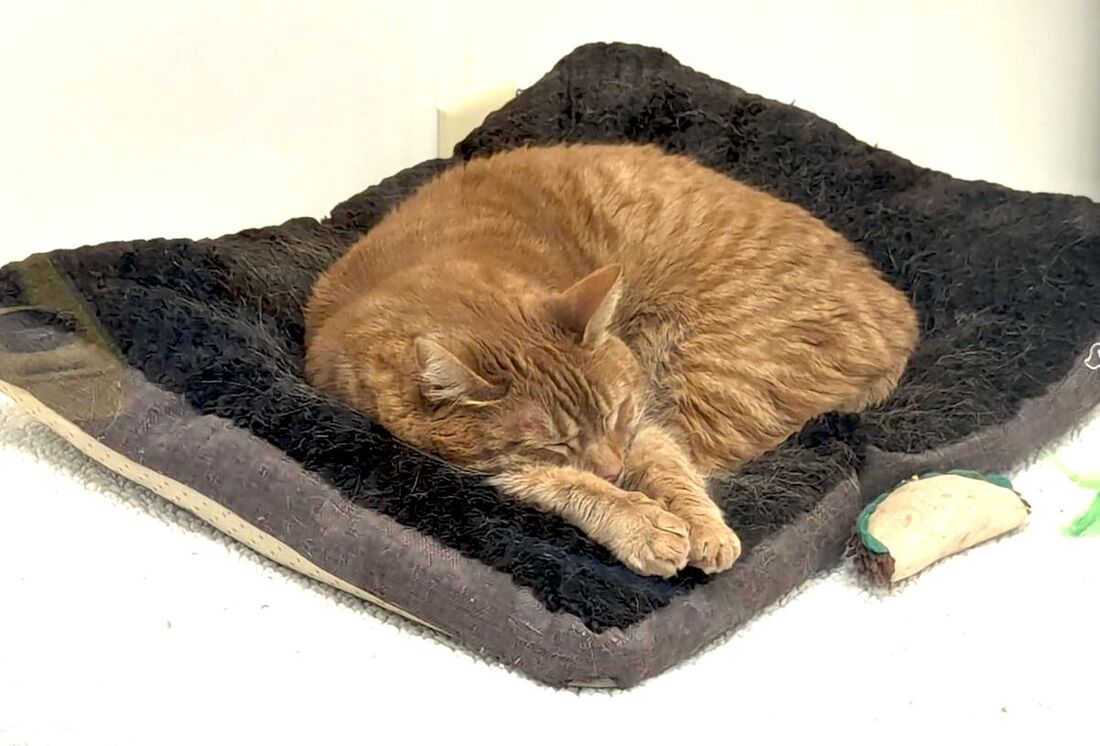
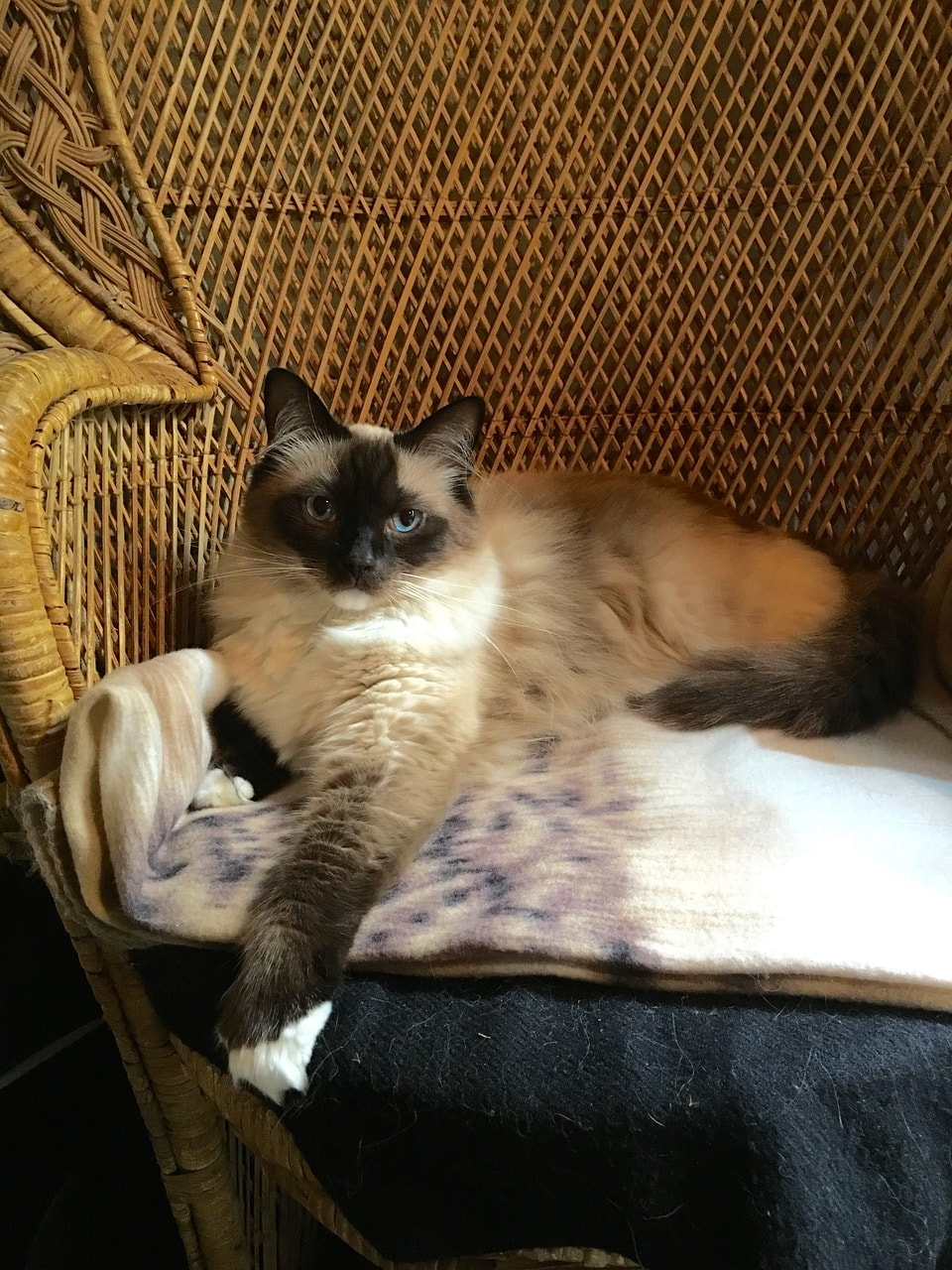
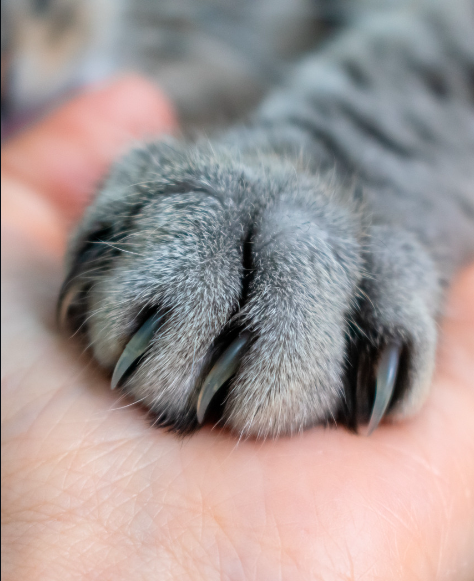
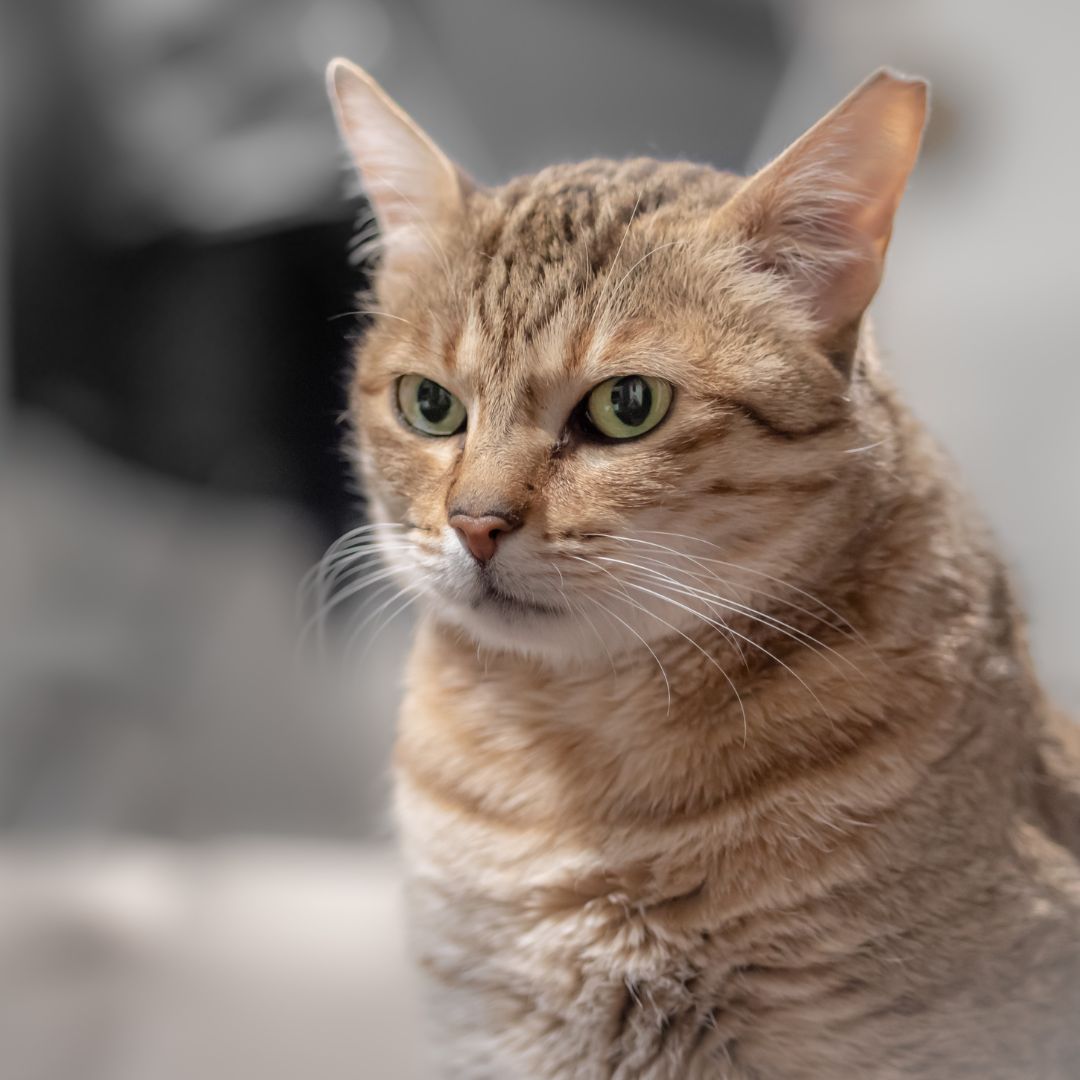
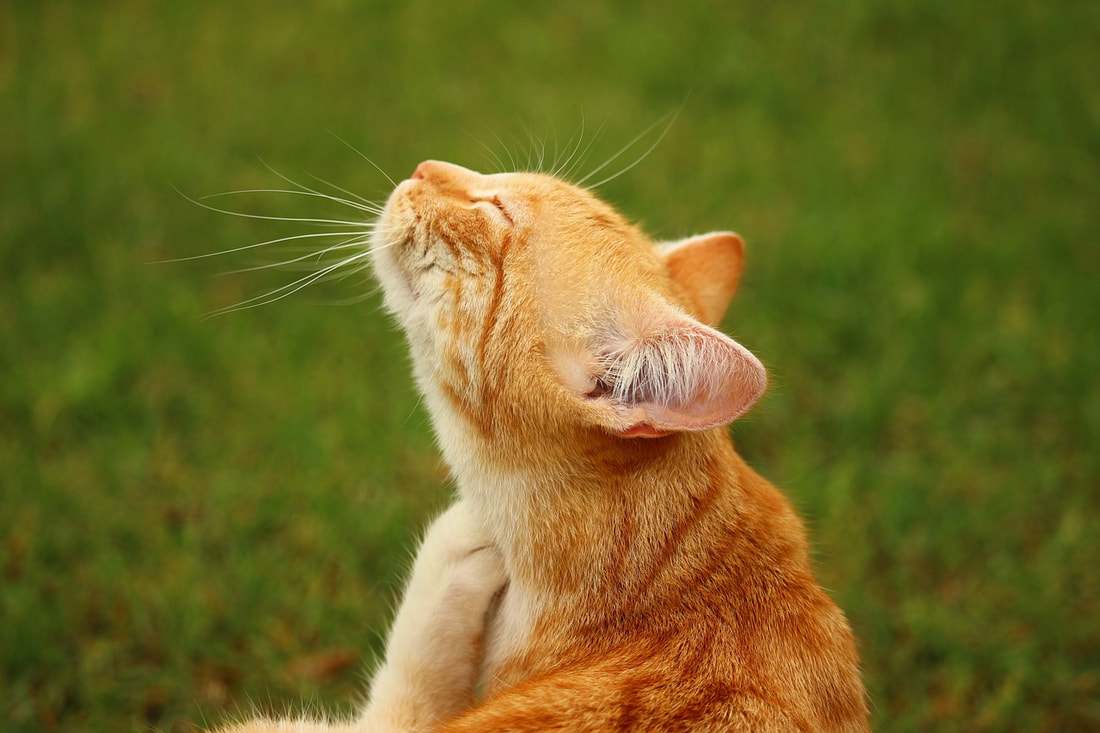
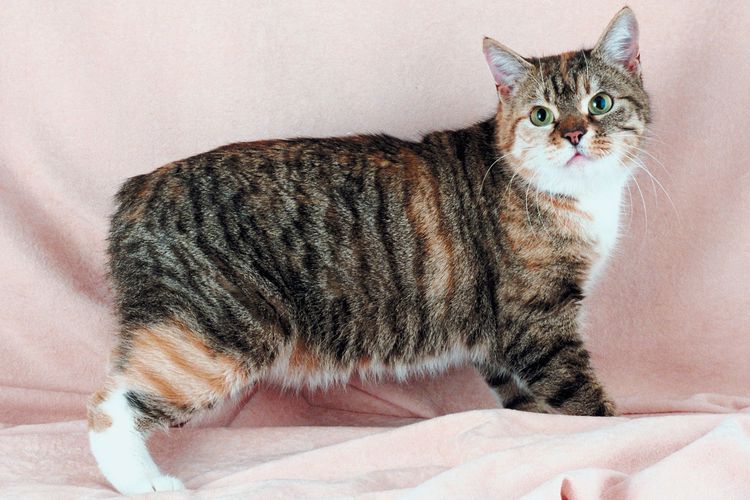
 RSS Feed
RSS Feed